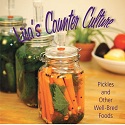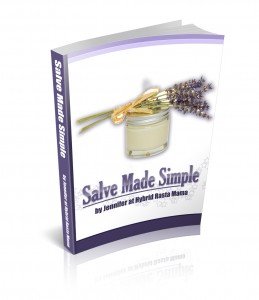GAPS Basics: Meat Broth and GAPS Pate
If you're new here, you may want to subscribe to my RSS feed. Thanks for visiting!
Many of my blog posts contain affiliate links. Purchasing through an affiliate link allows me to keep blogging and sharing what I learn with you. It is a bit like leaving a tip for service and is very much appreciated.
Thank You! -PattyLA
One of the biggest questions people have when starting GAPS is what is the difference between bone broth and meat broth. NCM recommends meat broth for starting out on GAPS and moving to bone broth later on. I have already done a post on bone broth. We really love the flavor of meat broth and save it for our mugs of straight broth when possible. It is milder than bone broth and while it doesn’t have the high mineral content of bone broth it does have more gelatin and that is what your gut needs for healing. It also won’t have very much of the free glutamines that bone broth has which can be a problem for people who are sensitive to MSG. In general most people find this kind of broth to cause less die off and to taste better so it is a good way to start GAPS. We continue to make it even after more than 2 years of GAPS.When making meat broth you need some meaty bones either beef soup bones, a whole chicken or pieces, lamb shanks, Something like that.


It is best to cut up a whole chicken or at least cut through the meat to expose the joints since that is where much of the gelatin comes from. It is ok if these are frozen when you get started. If you have a frozen whole chicken just cut down to the bones once it is thawed.
Put your meaty bones into a pot and just cover them with water. I like to add a bay leaf and some salt so that the meat is flavored while it cooks. If you use too much water your broth will be thin and watery. Use just enough to cover the meat and bones.
Turn the heat under the pot up to medium high or high. Once it comes to a boil there will be some scum that rises to the surface. Skim that scum off with a spoon and discard it. Don’t worry if you miss this step. It won’t be ruined, just not quite as good.
Now turn the heat down to low and put a cover on the pot. You want it to just barely simmer. Check it periodically to make sure it is the right temperature.
Once the meat is well done and falling off the bone you are done. Chickens take about 2 hours and red meat takes 3-4 hours. If you cook much longer than well done the meat will become flavorless so try to keep an eye on it. You can see that this chicken wasn’t fully submerged. I did turn it over half way through cooking to make sure the whole thing got well done. It came out just fine.
When it is done you have 3-4 things that need to be sorted out and packaged up for further use.
First you have the broth. I use a fine mesh strainer to strain it into quart jars and put into the fridge. This is your meat broth. I use this Wide-Mouth Funnel and this Fine Mesh Strainer
and this Fine Mesh Strainer daily for lots of jobs around the kitchen. If you don’t have one get one.
daily for lots of jobs around the kitchen. If you don’t have one get one.
Next you have the meat. This is good for using in soups and other recipes that call for cooked meat like chicken salad. Separate the meat from the bones and package it up for the fridge or freezer (or eat it. I often make this so that the meat will be done at meal time and deal with the rest of it after we are done eating and it has cooled a bit). I especially like making this if I have forgotten to thaw anything for dinner since it can be cooked from frozen.
The third thing you will get from this is the bones. I take the bones and any hard cartilage and put them into a bag in the freezer for when I am wanting to make bone broth. Yes these bones still have lots of life left in them. Do not toss them now!
What I have left at this point depends on what I made. If I cooked a chicken my family eats up all the soft bits and asks for more. I know some families don’t like the boiled skin and other fatty soft bits so you will have this left over. The beef bones and other red meat bones will have lots of marrow, fat and other soft tissues. Take all of these soft tissues and puree them together. Add a little broth if you need to make it smooth. This is your pate. I freeze it in small jars and then add a couple of tbsp to every lb of ground meat I cook up. You can also add this to cups of broth and soups. It gives broth a thicker richer consistency. I usually find that I have more soft tissue after making bone broth with my red meat bones. Some of those hard bits soften up with the longer cooking and can be made into pate at that time as well.
I hope that this clears up any mystery and confusion that people have had about the differences between bone broth and meat broth. And that you now understand how to make GAPS Pate and that you will make this nutrient dense and economical food for your family. These are important foods for the intro diet but are also beneficial no matter where you are on the diet or even if you aren’t on GAPS at all.
I would love to hear your favorite place to stick some GAPS pate. Make a comment to let us all know how to enhance our families nutrition even more.
To learn more about broth get my new ebook Broth: Elixir of Life






























I haven't used the pate before, just wanted to mention that my stovetop just doesn't turn low enough to keep the broth at a bare simmer. So I stick the whole pot in a 200 degree oven, which keeps it at a perfect low simmer.
Thank you for this tip, Lori. I have this problem too. Are both your oven and range on gas?
Thanks so much for this! We have been making the Italian Casserole recipe out of the GAPS book for quite some time now, but somehow I seemed to have missed the idea of a 'soft parts pate'. Great idea!
Before going grain free I couldn't tolerate the texture of fat at all without a gag reflex, but now after many months I can chew and swallow fat without the reflex!
Yes, actually they're on LP gas. I'm guessing that an appliance repair person could make some kind of adjustment to fix the problem - we just haven't gotten around to it, like so many other little things. 😉
Does the pate have flavor? I’m always grossed out by the idea of blending that stuff together, let alone eating it… can you sneak it in so it’s unnoticeable or will it have a strong flavor?
No it has a very mild flavor. I add it to lots of ground beef types of dishes and it just disappears.
Thank you so much for this! I make bone broth often but kind of really hate the taste on its own…I wondered if I could ever get to really having it every day. Made the meat broth today with chicken - had no idea broth could taste so good! Really appreciate the post and the explanations on the different kinds of broth.
I’m a bit confused. Do you take the fatty bits from the chicken and blend them into “pate” as well, or does this only work with beef? I’ve been a vegetarian for over 20 years and am just trying to get back into eating meat again. And to recover my sick digestive tract, decided to try GAPS. So I’m kind of clueless with this stuff. Before I go fully into GAPS, starting with the introduction, I’m starting off small, with even trying to introduce/tolerate meat back into my diet. In the past week, I’ve reintroduced egg, chicken breast, salmon. However, I’m only able to manage to eat around 2 oz of meat per day so far (baby steps!). Today I’m making chicken broth in the hopes of staving off some of the hunger as I have started to eliminate grains and beans. I want to save the bones for later, but not sure to do with all those fatty bits, as there is just no way I’m going to be able to eat that, since I can barely manage to eat (at this point, at least) 2 ounces of chicken breast let alone the fatty parts. Also, is there actually marrow to be gotten out of chicken bone, or just beef bone? Sorry for all the “stupid” questions!
Hi Nancy,
Changing from a vegetarian diet to GAPS can be a difficult transition. Many have done it but be gentle with yourself while you make this change. Yes indeed anything that is not meat or bone can be blended up to make the pate. There is marrow in chicken bones but it is much harder to get at than in the beef bones. I personally don’t really bother with chicken marrow and just eat the marrow from the bones of bigger animals since it is easier. If you blend up all the soft stuff you can then mix that into other foods like soups (especially blended soups) casseroles etc. It will give it a much richer flavor but won’t change the texture really so that is easy to do.
Your questions are not stupid! We all had them at one point. I want to also advise you to work on adding to your diet first and once you can tolerate some of these foods, then look into removing from your diet. No need to starve and struggle so much if you can avoid it. Start cooking your grains and beans in broth to be getting used to it and then slowly remove those foods from your diet so that you can heal even more. Broth is powerful stuff! It can heal many things just by itself.
Best of luck to you as you make these changes!
Hi,
I am just starting to introduce gaps friendly foods to my diet and started eating gluten, sugar and casien free for 2 days. I am hoping to do fulls gaps once I am comfortable I can feed myself and family, so I found some grass fed bones and have been cooking them for 1.5 days in the slow cooker, but added some water every day, how much bone broth comes out of 2 pounds of bones? I got a bit scared if it boils down so much then my 2 days of cooking will only give me 1 day of broth, I could do another batch on the stove if this is how to do it, or do I add water so it is the same amount of liquid that I started out with (slow cooker 3/4 full)?
Sorry for the long question, I have been searching online for a few hrs and couldn’t figure this out
Hi Esra,
I don’t know how much broth per lb of bones. What I always do is just cover them with water. The more water you add the more watery your broth will be. It is much easier to dilute it later if it is too strongly flavored than to boil it down if it is too dilute. It takes up much less room in the fridge that way too. I personally do not do my broth in the slow cooker but I think it takes about the same amount of time as on the stove top and will yield about the same amount of broth. Some do what they call “perpetual broth” where they take out some broth every day and add more water and keep repeating till the broth that they get out is watery tasting. It can help if you add a few more bones every day. I save the bones from steaks and roasts and the like and will add them as I get them and just keep some broth simmering on the back of the stove sometimes.
Good luck! Let me know how it goes.
Do you really use the chicken skins ? Aren’t you going to have high cholesterol levels or high LDL levels as a result of eating like this day after day?
My cholesterol # are fantastic! The best of my life after eating this way for nearly 3 years. They were never bad but they just keep getting better. My good cholesterol used to be very low and now it is above range high (a great thing). My ratio is fantastic. Triglycerides are very low and my over all cholesterol is high in range. Just where I want it. Women with low cholesterol die younger than women with high cholesterol. I would rather be alive than have low cholesterol #’s to carve on my grave stone.
My husband just got his cholesterol checked. I hope he doesn’t mind me sharing his results here. Next month will mark 3 years on GAPS. He has a family history of high cholesterol and heart disease.
Your Total Cholesterol of 218 is BORDERLINE
Your LDL of 126 is NEAR OPTIMAL
Your HDL of 80 is OPTIMAL
Your Triglyceride level of 60 is NORMAL
RATIOS:
Your Total Cholesterol/HDL ratio is: 2.73 - (preferably under 5.0, ideally under 3.5) IDEAL
Your HDL/LDL ratio is: 0.635 - (preferably over 0.3, ideally over 0.4) IDEAL
Your triglycerides/HDL ratio is: 0.750 - (preferably under 4, ideally under 2) IDEAL
Thank you, Patty. That was fascinating information. I do feel better now. However, I am still concerned about my gallbladder. Everything that I read says that saturated fat is harmful to the gallbladder. This is so confusing !
I want to thank you for your website. It is the most informative of all of the GAPS blogs I have seen.
The whole job of the gall bladder is to concentrate bile so that it will work better digesting fats. It is a bit silly to think that it is bad for the gall bladder for us to eat saturated fat. However! If you have been eating a low fat diet then your liver will not be making much bile and you may have some sludge or stones in your gall bladder. Dramatically increasing your fat intake can be painful either because you can’t digest it (not enough bile) or you begin to pass those stones or sludge. So increase your intake slowly and look into taking ox bile to help with fat digestion temporarily while you get your liver working better.
Hi,
I was wondering in making this meat broth, can I opt for only chicken feet instead of a whole chicken or meaty parts? I wished to use like perhaps a pound of chicken feet with two tablespoons of apple cider vinegar. Will this still preserve the healing effect of the broth on a weak or injured Gastrointestinal tract?
Thanks.
Yes some do make their broth this way and it will indeed have lots of gelatin. Remember to just cover the feet with water when you make the broth.
Can you can the broth, or can it only be frozen?
I suspect that canning will break down the gelatin like dehydrating does but I have not tried it out since I do not have a pressure canner. Meat broth is a short cooking time to preserve the most gelatin. Pressure canning it will double the cooking time and may not be ideal. Bone broth however is a long cooking time and pressure canning it will not make much of a difference there.
That said the author of the GAPS book is not in favor of canning. Also canning will introduce some bpa into your broth (from the lid) so be aware of that factor. I think home canned broth is probably still better than no broth but not as good as “fresh” or frozen broth.
Hi Patty,
What a wonderful website!!! I have downloaded your meat broth/bone broth recipes and have used them for many months. My question is…..if I’m just starting out with the raw knucklebones, meaty neck bones and marrow bones, can can I make the meat broth and the bone broth at the same time….taking meat and marrow out after 3-4 hours to preserve the taste, and then continuing with the bones for the rest of the time? (24-72 hours) If that is the case, does one add the vinegar at the start of the process, or do you add it only when the bones are the only ingredient in the pot? Thanks for your reply.
Laurie
Yes you can do that. Go ahead and add the vinegar at the start of the whole process.
Hi Patty,
I’m a bit confused about meat stock vs. bone stock in regards to the GAPS diet. I’m just now starting the GAPS diet and in NCM’s book she says not only to boil meat but also to boil joints, marrow bones, etc. Where in the book does she mention that meat stock should be used before bone stock? I also don’t remember reading about free glutamines in bone stock. Perhaps I just looked over this?
Thanks for the help!
Kristin | Living the Rustic Life
Meat stock is made using meaty bones. It refers to a shorter cooking time that NCM recommends for the intro diet. I think it is in her FAQ’s where she talks about moving to bone broth later. Also the GAPS Guide talks about starting with meat broth and then moving to bone broth. As for the free glutamines, I don’t think that is found in her book however google showed me many sources talking about it being found in broth.
Thank you for your quick reply! I’m actually officially starting the GAPS diet tomorrow. I’ve packed my freezer full of bone broth preparing for it. Did I make a mistake or should this be fine for the Intro diet? I don’t have horrible reactions to MSG.
Thank you for your wonderful blog, by the way!
Do you have any reactions to MSG? My best advice is to make up some meat broth (it is quick to make) and just use that for the first couple of days and then see if switching to bone broth causes any problems. For most people it doesn’t but for some it does (and they never suspected it before). Intro is tough if you aren’t reacting to the foods you are eating. It is much tougher if you are also dealing with a reaction to a food.
Thank you for this post! I feel like I’ve been researching GAPS forever yet still not completely prepared. If I simmer in my oven as opposed to the stovetop (as my stovetop never gently simmers mainly burns) is it about the same cooking times you mentioned above?
Yes that won’t change the cooking time.
Thank you for posting this – it was of great help in explaining the difference between the two broths and the uses.
I was wondering - if I made the meat broth, took out the meat (e.g., chicken after two hours), but just left the liquid in to be the base for the bone broth – what are the results? Would I end up with more flavorful and higher nutrient-rich bone broth? Or would continuing to cook the meat broth (turning it into bone broth) for another 24-46 hours destroy nutrients and benefits that would otherwise be available in the meat broth only?
Your bone broth would be more flavorful but it will break down the glutamine and so it won’t be as high in gelatin as the meat broth is. Best is to make each kind and combine them for the best of both worlds.
Hi thanks for a fantastic blog post clearing up the confusion!
Just wondering if you could advice on the best way
/times to cook meat stock and chicken stock in a crock pot please
Just like with cooking in a pot you will cook till the chicken/meat is well done for meat broth. The takes longer in a crock pot since it takes longer to get up to temp. I do not do it very often so I don’t have a time for you but I would guess that it takes at least 4 hours on high for a chicken.
Again you will cook till the meat is well done. For a chicken I think that is 5-6 hours on high. Beef will be a bit longer than chicken. I don’t do it a lot personally because I like to make a bigger volume at one time than my crock pot allows.
Hello PattyLA,
I am waiting for the Gaps book to arrive. In the meantime I have started the gaps. I am not doing the intro. I make my broth with hearts and liver pieces that I buy with the chicken. I have the butcher cut the chicken in half so I can get it into my crock pot. I have now read on your site that cutting it up is a good thing.
My question is the hearts and liver considered the pate?
Thank you, Leslie
Hi Leslie,
No the pate for GAPS is made from the skin, fat and other bits that are not meat and not bone and are soft enough to blend up.
Typical pate is made from liver but this is something different. Those parts are very good for you though! Be sure to eat them too!
Hi-
When making the meat broth with a whole chicken how much water do you use? I did not see any specifics?
Thank you in advance~
Stacey
Hi Stacey,
Sorry I missed this till now. Use just enough water to cover the chicken. How much will depend on how big your chicken is. You also want it in a pot that doesn’t have a lot of extra room around the chicken.
My mother always used to break the bones to boil out the marrow, but I’m not strong enough to break them. Any ideas? A hammer gets messy. Do you think it’s worth the trouble?
I wait till the bones are soft from boiling them before I try to get the marrow out. I the bones aren’t already cut I don’t get marrow from them when making meat broth. Also some chicken bones can be cut in half with good kitchen sheers or a cleaver.
Thank you for the good clear description of this stuff.
Just to be sure and put a fine point on it, the difference between bone broth and meat stock essentially comes down to there being more meat on the bone for meat stock, and minimal meat on the bone for bone stock?
Nope. The difference is mostly in how long you cook it.
What a great article!!! Thank you!!!! My son has had 2 brain traumas and can not tolerate glutamates, extra calcium, or free aminos that are excitatory, so I had to stop the bone broth. He does well with mega dosing magnesium, but I think his athletic performance is hindered by lower calcium…I’m thinking regular meat based broth may be the perfect answer, with minerals, fat, and lower glutamates!
MamaLove recently posted…Healthy Child Summit Starts Today!
Sorry this took so long to reply to! It got lost among a bunch of spammy comments.
Meat broths are not very high mineral although they do have some. I hope you tried it and your DS is able to tolerate the broth. Remember to just barely simmer to keep those free glutamates at a bare minimum.
I cooked a chicken in the stove (in a Pampered Chef stoneware with stoneware lid) and kept the broth that came off of it. After putting it in the frig I realized it is all gelatin. Can I use that? Perhaps add it to other meat broth? I am brand new to GAPS and waiting for my books to arrive.
Also my family are hunters. Can I use other type of fowl for the meat and bone broth? I saw duck listed in Nourishing Traditions but I have a lot of quail and pheasant.
Thank you for any help! I’m enjoying your site.
Yes that is broth. Yes use any meat you can find. The more variety the better.
Hi! My 5 month old has shown clear evidence of dairy intolerance through my breast milk. I am hoping to start him on solids soon but am considering some broth for a few weeks first. I’ve seen some blogs out there that suggest bone broth for babies first food, but after reading this I’m thinking a meat broth would be better. Thoughts or experiences with broths and babies?? Thanks!
I think that both kinds of broth have their place. Bone broth has lots of minerals while meat broth has more gut healing gelatin. I would make sure you are getting plenty of both for yourself to heal your own gut. It must be somewhat leaky for the dairy proteins to be getting into your milk.
I did not know about broth for babies when mine were babies and did not start them on it till they were older.
Thanks for the feedback! Interesting thought about my own gut effecting my milk. Never thought about it that way. Do you happen to have any research supporting that? I’ve never suffered from intolerances or allergies but it makes sense. Dairy intolerance is so common in babies. Could that many breastfeeding moms have leaky gut? Maybe?!
It has been a while since I did much research into breastfeeding but there is a bit of a debate about mom’s diet impacting baby. The reason is because while some mom’s have dairy proteins in their milk after eating dairy other mom’s don’t. (This was tested but I couldn’t begin to find the study). No other foods have been tested. Many Americans have sub par gut health even if they don’t realize it. Often the symptoms don’t seem to be gut symptoms. Constipation, diarrhea, bloating, reflux, as well as things like joint pain, lack of energy, eczema, and other non-gut symptoms can all be from leaky gut. My husband recently found out that he has Celiac Disease. He never though that his “gut issues” were significant and just thought that they were normal digestion symptoms. They were not incapacitating and he just assumed that everyone had similar reactions. I have encountered many people over the years that just assume that their symptoms are normal and not a sign that there is something not right in their guts. In fact it is so common that as a society we no longer think that things like needing a tums after a meal or avoiding certain foods that don’t agree with you is an unusual thing or a reason to suspect ill health.
Very interesting Patty! My dad is actually a bovine veterinarian and is going to do some research for me. Thanks for pointing me in this direction. I’ll be sure to let you know what I find
Hi, I have made pate and was wondering how to use it?
I had a few spoonfuls warm and liked it but now it’s cold in the fridge it’s grossing me out a little.
I was thinking of frying it up in butter or ghee like meatballs so that it’s not cold. Have you ever tried that? And I know I can stir it into broths. What else?
(I am including gap meals into my diet in preparation for intro - not doing intro yet)
I have just added it to other dishes to enhance them. My children used to love it cold and plain but I never did. However you can add it to many dishes that have a sauce or mix it with ground meat when you brown it.
I’m very new to broths, but I’m so excited to try them for my son (2 years old) and myself. I’m currently cooking my chicken for meat broth. After it’s done, you take all the skin and soft bits and mix them up. I plan on blending them in my Vitamix. Once I blend them, can I add this pate to the broth for the extra goodness? My son does not eat meat (never showed interest).
Absolutely you can add pate to the broth if he will drink it like that.
I was making broth each week but my partner really can’t tolerate the smell. I’ll admit it’s quite intense. Does anyone have any tips about how to contain the smell? Thanks
Making it in a pressure cooker makes a big difference in smell.
I am trying to get gelatin in broth to help heal my gut (have IBS-C). So what causes the gelatin to form in the meat broth? Does it only come from the connective tissue and not from the bone itself? You do not need an acid like vinegar or lemon juice to get the gelatin? Should you expect to get gelatin with bone broth if you only have bones, say, like marrow bones with no meat or connective tissue? I’ve been making what I thought was bone broth with meaty bones for a while-since I’ve only let it simmer about 8 hours I think I’ve just been getting meat broth. However, I haven’t seen any gelatin when it’s cooled. This last batch with a turkey carcass I let simmer in the crock pot for ~36 hours and it’s pretty much all gelatin. Unfortunately, I think it’s making me very gassy and gurgly and even more constipated-all symptoms I am trying to get relief from. Would this be from the gelatin or from the minerals leached out of the bones? Very confused! (I also threw in the liver and other organ meat in the turkey bone broth-I guess that might be too much of a good thing too…)
Erin I recently posted…Healthy Child Summit Starts Today!
Meat broth is made from a very short cooking time usually 2-4 hours depending on the kind of meat. There is a small amount of connective tissue contained in the bone matrix itself but much more is in the connective tissue and cartilage. Crock pots require more time cooking since there is extra time to get it up to temp. However long it takes to fully cook the meat is the right time for meat broth. Bone broth is your only option if the bones were already cooked once.
I made a meat broth and put it in the fridge, it has a fatty layer on top now cooled bytes no Gelatin that I can see. Is this right?
Did you include bones or did you just use meat? How much water? It is possible that the gelatin is simply diluted too much to see.
Could I make meat broth by using a meaty bone and also include chopped veggies thereby skipping a step and having the soup along with the meat broth?
yes that should be fine.
Do you ever do meat broth in the pressure cooker? I got mixed up on the methods and have been cooking my meat broth in the pressure cooker for 1 hour. The broth turns our beautifully gelatin -y. I just realized today that you cook your meat broth in a pot on top of the stove. I’ll cook it that way in the future if it is better but was just curious about if pressure cooking it is OK, too. If so, how long should I be cooking it in the pressure cooker.
Just got brave enough to use the pressure cooker I bought 2 years ago and was so proud of myself for using it. Haha
I make all of my broth in the pressure cooker now. I think it comes out the best.
Hi,
thanks a lot for those infos. Is the pate very important for healing? Because my gut gets irritated from many things and fat is one of them. I then get symptoms of inflammation (eyes hurt, body aches and I could sleep all day long). So usually I put the broth in the fridge and when it is cooled off I remove the fat layer which is hard and easy to remove when cooled.
Second question about gelatin. I read that it happens that if the temperature is too high there won’t be no gelatine because it got broken down. But this is no issue because all amino acids are still in the broth. Is this true in your opinion?
Thanks again.
Fat is important for healing. If it irritates you work your way up slowly increasing your intake.
Gelatin is more than the combination if it’s amino acids and is more healing to the gut than those same components broken down.